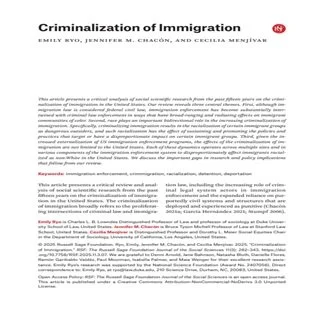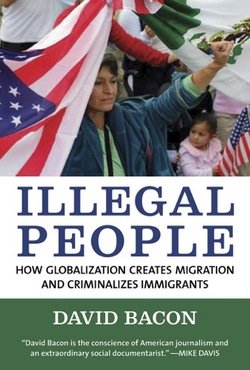By Emily Ryo, Jennifer M. Chacón, and Cecilia Menjívar
This article presents a critical analysis of social scientific research from the past fifteen years on the criminalization of immigration in the United States. Our review reveals three central themes. First, although immigration law is considered federal civil law, immigration enforcement has become substantially intertwined with criminal law enforcement in ways that have broad-ranging and radiating effects on immigrant communities of color. Second, race plays an important bidirectional role in the increasing criminalization of immigration. Specifically, criminalizing immigration results in the racialization of certain immigrant groups as dangerous outsiders, and such racialization has the effect of sustaining and promoting the policies and practices that target or have a disproportionate impact on certain immigrant groups. Third, given the increased externalization of US immigration enforcement programs, the effects of the criminalization of immigration are not limited to the United States. Each of these dynamics operates across multiple sites and in various components of the immigration enforcement system to disproportionately affect immigrants racialized as non-White in the United States. We discuss the important gaps in research and policy implications that follow from our review
RSF: The Russell Sage Foundation Journal of the Social Sciences 11(3): 282–343.













